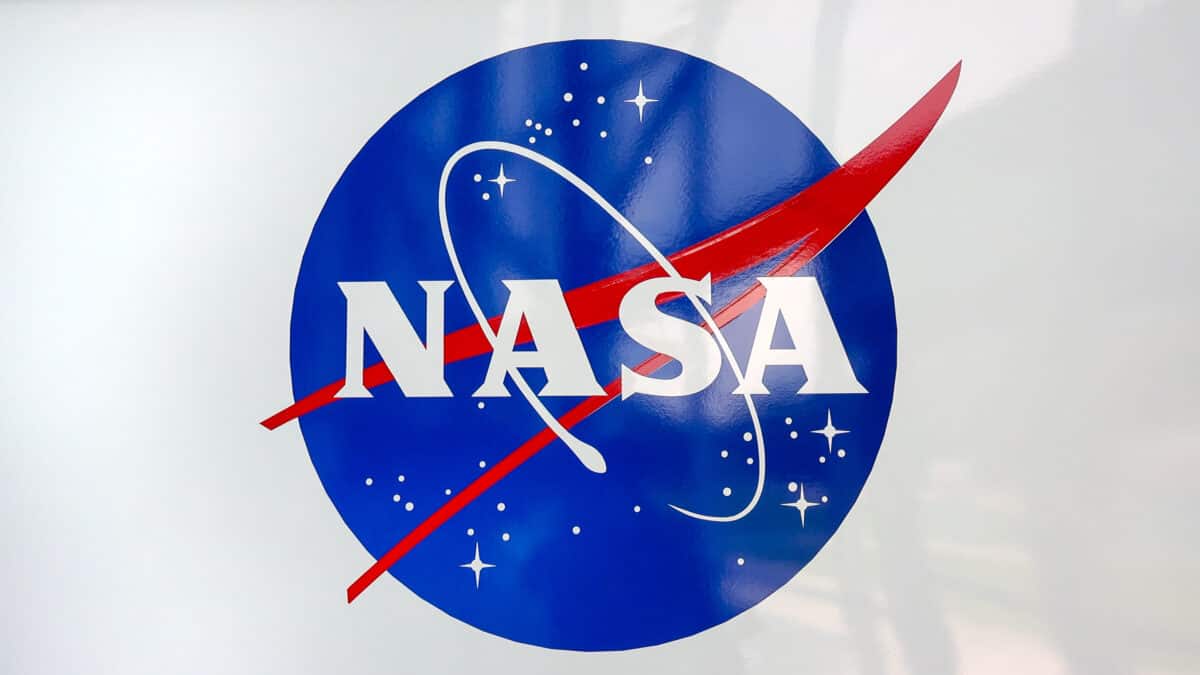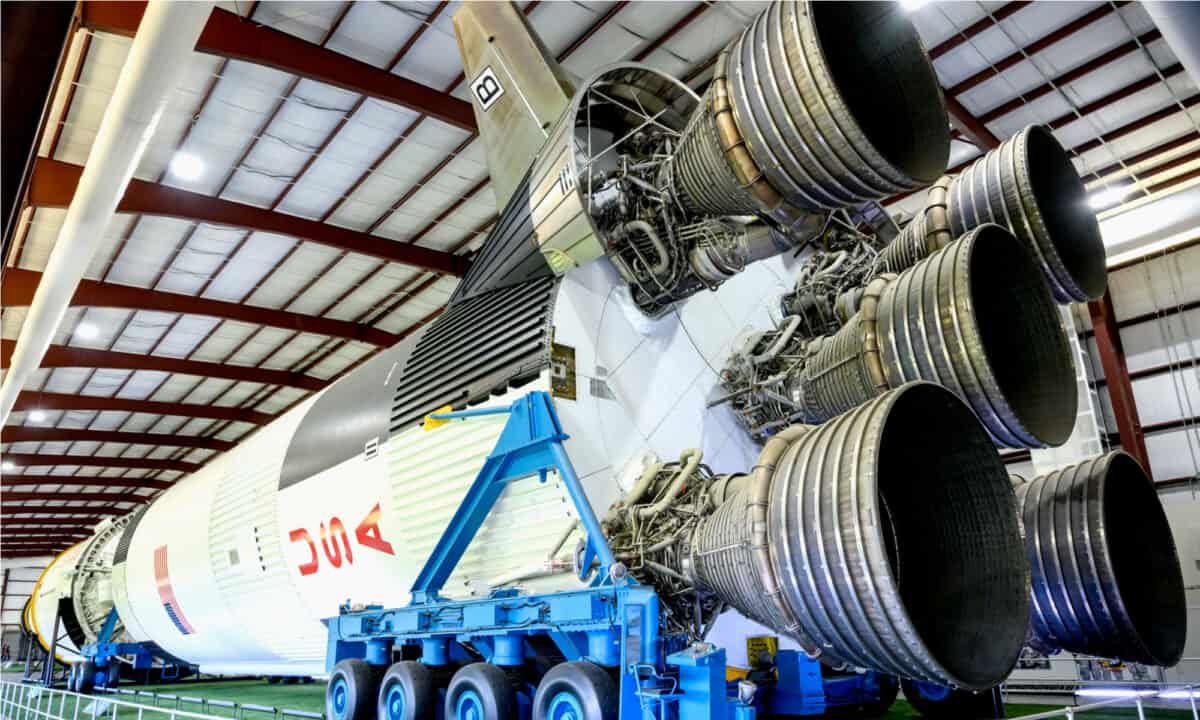When mankind began its mission to the moon, all of the world’s top science and math minds knew one thing: The bigger the rocket, the better. Of course, this kind of feat takes serious time, money, research, trial, error, and triple-checking to make it a reality.
All of this innovation, all of this scientific method in action, and all of this energy eventually led to the creation of the largest rocket ever built.
But what exactly is the largest rocket ever created by man, and how was it conceived? What was its history like? And how does it stack up against other, similarly large rockets from throughout the history of space travel?
Let’s break it all down below.

©Paul Harcourt/Shutterstock.com
What Is the Largest Rocket Ever Built In The World?
As of April 2023, Elon Musk’s SpaceX Ship is about to take a huge leap into the unknown. The largest spacecraft to ever leave planet Earth is the massive rocket ‘Starship’ Starship. The Starship launch system comprises two components: the Super Heavy booster, which serves as the first stage, and the Starship’s second stage. After reaching orbit, the second stage acts as a self-contained spacecraft capable of transporting either cargo or crew.
| Height | Diameter | Empty Mass |
|---|---|---|
| 69 m 226 ft | 9 m 30 ft | 200 t 440,000 lb |
Additionally, there are some other worthy competitors, so let’s dive into what makes a rocket the largest in the world.
When determining the largest rocket ever made, there are several features and specs to consider. These include height, weight, total size, cost, payload capacity, and so on. It’s so much more than just one or two of these specs — it’s the big picture that matters most here.
Here are the specs for the second-largest rocket ever built:
| Height: | 110.6 m/363 ft |
| Weight: | 6.2-6.5 thousand pounds |
| First Launch Date: | November 9th, 1967 |
| Last Launch Date: | May 14th, 1973 |
| Years Active: | Six |
| Payload Capacity: | 310,000 lbs (LEO), 95,900 lbs (TLI) |
| Total Launches: | 13 |
| Features: | Largest and most powerful rocket ever built; Taller than the Statue of Liberty and heavier than 400 elephants |
| Stages: | Three |
| Cost: | $6.4 billion ($185 million/launch) |
Taking a look at its height of 363 feet, its weight of nearly 6.5 million pounds, its enormous two-to-three-tiered size, its $6.4 billion dollar price tag, and its 310,000-pound payload capacity, there’s no doubt that NASA’s Saturn V is the largest rocket ever created by man.

NASA Logo
©CrackerClips Stock Media/Shutterstock.com
This super heavy-lift launch vehicle hails from America and was created as a part of the Apollo program — this means it was primarily intended to help take astronauts to the moon. From 1967 to 1973, it did exactly that: The Saturn V took nine different crewed trips to the moon and launched the first American space station, Skylab. Let’s go more in-depth on the development, launch history, and features of the Saturn V below.
Saturn V Development
Starting in 1960 and stretching to 1962, NASA scientists at the Marshall Space Flight Center in Huntsville, Alabama designed a series of rockets intended to orbit Earth and venture to the moon. They called the family of rockets Saturn, named after the planet and used in reference to the Jupiter family of rockets that preceded them.
NASA tested a prototype called the C-3, the C-4, and eventually the C-5, with this last of the three eventually becoming the rocket we now know as the Saturn V. At the start of the new year in 1962, NASA made it official: The three-stage Saturn V would be constructed, tested, revised, and finalized for use in the Apollo program in 1967.
Saturn V Launch History
Once completed, the Saturn V went on to take part in every lunar mission in the Apollo program. Each of these launches took place at Florida’s John F. Kennedy Space Center, then — once the Saturn V made it off the launch tower — transferred its Mission Control to Texas’s Johnson Space Center. Remarkably, each launch from Kennedy Space Center saw the Saturn V in use for no more than 20 minutes.
All in all, the Saturn V took part in 13 total launches from the Kennedy Space Center with 12 of those 13 being successful. (What’s more, that one unsuccessful launch was only a partial failure: Apollo 6 endured three engine failures, but the computers on board the Saturn V were able to correct the issue by simply burning the remaining engines for longer than usual.) Its first launch date was November 9th, 1967 and its last launch date was May 14th, 1973.
Here’s a list of all of the Saturn V’s official launches:
- Apollo 4: (November 4th, 1967)
- Apollo 6: (April 4th, 1968)
- Apollo 8: (December 21st, 1968)
- Apollo 10: (May 18th, 1969)
- Apollo 11: (July 16th, 1969)
- Apollo 12: (November 14th, 1969)
- Apollo 13: (April 11th, 1970)
- Apollo 14: (January 31st, 1971)
- Apollo 15: (July 26th, 1971)
- Apollo 16: (April 16th, 1972)
- Apollo 17: (December 7th, 1972)
- Skylab 1: (May 14th, 1973)

©tishomir/Shutterstock.com
How Do Other Rockets Compare?
Now that you understand the history of the largest rocket ever created by man, the Saturn V, and know enough about its size and specs to see why it takes the crown, it’s worth looking at two rockets currently in development that are slated to best the Saturn V upon their completion.
The NASA Space Launch System (SLS)
NASA’s Space Launch System — also known as the SLS — is still in the works, but once it completes its first scheduled launch sometime after August of 2022, it will be even larger than the Saturn V. Conceived as the replacement for the Saturn V’s replacement, the Ares I and the Space Shuttle, the SLS was created with the intention of becoming NASA’s preferred launch vehicle for upcoming deep space exploration missions later on in the second half of the 2020s and beyond.
Being such a powerful vehicle, it’s possible that the SLS could take astronauts to Mars one day in the near future. Upon its launch, the Space Launch System will stand 365 feet tall with a weight of more than 5.5 million pounds.
The SpaceX Starship
It wasn’t enough for Elon Musk’s aerospace manufacturer SpaceX to make history with the massive Falcon 9 and even more powerful Falcon Heavy — they had to top their own creations with the invention of the Starship.
More powerful than the Falcon 9 and even the Falcon Heavy and poised to be the largest and strongest rocket mankind has ever seen, this Falcon 9/Falcon Heavy replacement will be bigger and stronger than both the SLS and the Saturn V.
In its current state (still pending approval prior to its maiden voyage sometime very soon), the SpaceX Starship measures 400 feet tall and weighs over 10 million pounds.
Looking for more? Check out The 10 Largest Rockets of All Time and SpaceX’s Falcon 9: Specs, Size, History, and More.